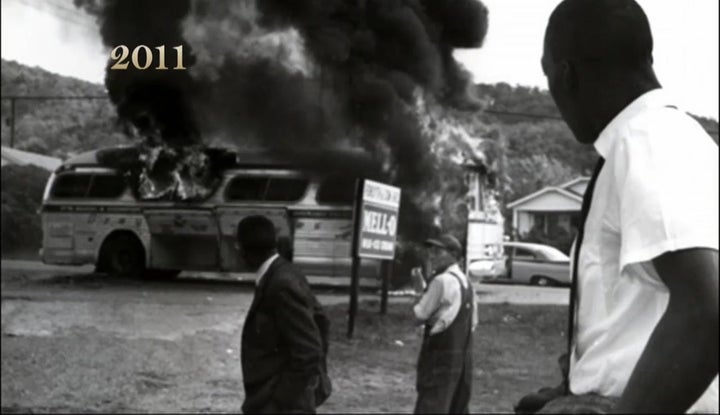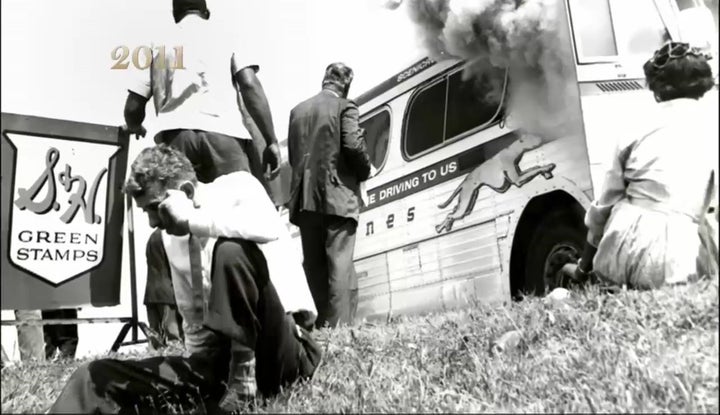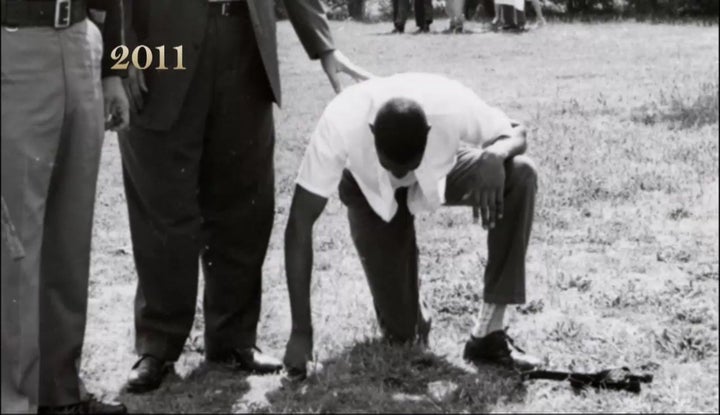Warning: Content in the video and article may be disturbing. Discretion advised.
On May 4, 1961, a group of nonviolent protesters boarded buses in Washington, D.C., heading straight into the segregated South. Along the two-week journey, the diverse group -- known as the Freedom Riders -- planned to defy the racial designations that kept blacks and whites apart.
(Though segregation was technically prohibited on public buses, many southern states still practiced strict segregation and the federal law was rarely enforced.)
It was a dangerous and daring mission. Some, including the Freedom Riders themselves, considered it a suicide mission. But those brave men and women were willing to sacrifice anything except their civil rights.
By May 14, the buses reached the Alabama border. There, a mob of Ku Klux Klan members met the Freedom Riders and all hell broke loose.
Hank Thomas, then 19, was one of the Freedom Riders on that bus, and he opened up about the experience during the farewell season of "The Oprah Winfrey Show." As he said back then, the mob was angry and ruthless.
"They were trying to get into the door, but, fortunately for us, the bus driver got off of the bus [and] locked the door, so they couldn't get inside," Hank said. "For a moment, I thought we were safe."
But, they weren't.

The mob firebomed the bus, and smoke began to fill the interior, seeping into passengers' lungs. Still, the Freedom Riders were willing to try anything to avoid exiting the vehicle.
"I knew if I got off the bus, the mob would kill me," Hank said. "They were yelling, 'We're going to kill these n***.'"
At that moment, the teen felt he had no choice other than to pick which way he wanted to die: at the hands of a violent mob or within the confines of a blazing bus.
"Frankly, I decided to commit suicide," Hank said. "I thought, if I breathe in the smoke... it would put me to sleep and that's the way I would die."
Hank took a big, deep breath of smoke, but his body involuntarily reacted, and he instinctively fought for air. He ran to the front of the bus, coughing.
"The people outside were holding the bus door when they saw that we were trying to get off," Hank said. "I can hear them saying, 'Let's burn them n*** alive.'"

At that moment, the fuel tank at the back of the bus exploded.
"That's the only way we were able to get off of that bus," Hank said.
The bus passengers spilled out onto the grass, and the mob pounced.
"When I got off the bus, a man came up to me... He said, 'Boy, you all right?' I nodded my head and the next thing I knew, I was on the ground," Hank said. "He had hit me with a part of a baseball bat."
In the midst of the chaos were also local men and women trying to help the Freedom Riders. One such Southerner was a young seventh-grade girl named Janie Forsyth, then 12 years old.
"It was horrible. It was like a scene from hell," Janie later told Oprah. "It was the worst suffering I'd ever heard."

Still, Janie wanted to help. "I walked right out into the middle of that crowd. I picked me out one person; I washed her face, I held her, I gave her water to drink. As soon as I thought she was going to be OK, I got up and picked out somebody else," she recalled.
Hank was one of the people that Janie helped that day. (See their emotional reunion here.) Though he survived, the buses ultimately did not reach New Orleans. However, the attacks and movement received international attention, and Freedom Rides continued to take place.
Then, on Sept. 21, 1961, the Interstate Commerce Commission issued an order taking down the Jim Crow signs from all of the bus and rail stations in the south. It was a historic achievement.
More about the Freedom Riders:
